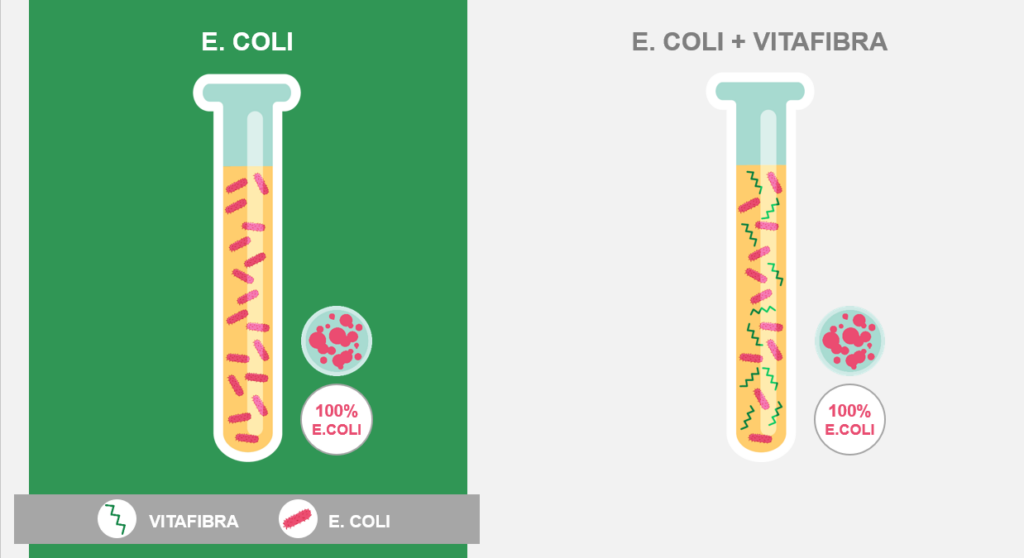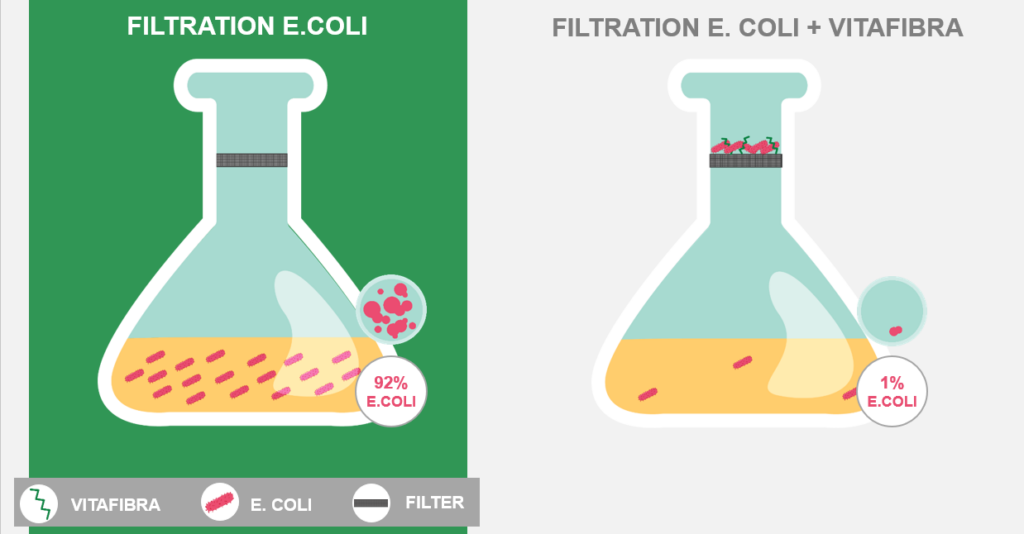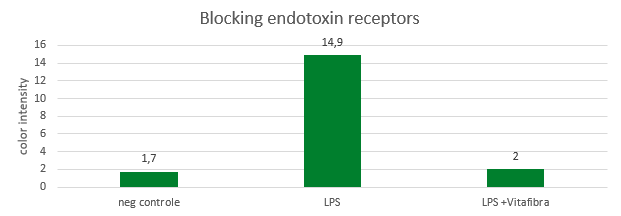Since decades nutritionists all over the world are using fibers in animal nutrition. These dietary fibers can increase passage time in the stomach, increase or decrease the saturation feeling of the animals, alter the viscosity of the feed next to other applications. In the early years of the 21st century the industry started to focus more on the prebiotic aspects of certain fiber and sugar combinations. Beta-glucans, MOS, FOS, XOS and more recently also GOS products can show nice effects on modulating the microbiota through positively stimulating the growth of some of the favorable bacterial groups that increase gut health and in this way indirectly increase the animals health.
Agrifirm went one step further and developed a third generation of functional fiber fractions (Vitafibra) which can have a direct effect on pathogenic bacteria (agglutination) and toxins (receptor blocking).
The fiber molecules are extracted from natural sources and are selected on their specific ability to bind pathogens. The functional fiber, which is commercialized in the Aim For Zero weaning concept (www.aim-4-zero.com), is an inert fiber but is highly soluble.

By agglutinating pathogens (like E. Coli) it is possible to wash them out of the gut preventing them to infect the animals. This agglutination is clearly demonstrated in an in vitro model. By filtering a mixture of E.coli and Vitafibra using a filter with a pore size big enough to allow single E. Coli bacteria to pass through, we see a decrease of 2 LOG units of E.Coli in the filtrate (Figure 1). This means that most of the E.Coli didn’t pass the filter because it was bound to Vitafibra.

Besides binding pathogens, Vitafibra is able to block for example endotoxins. Endotoxins, being parts of the bacterial cell membrane of E. Coli, cause inflammation even after the bacterium is destroyed. They bind on cellular TLR-receptors and activate a cascade of mechanisms resulting in the production of cytokines (IL-1, IL-6, TNF). These cytokines cause a local inflammation in the intestine which at the end will lead to post weaning diarrhea. The specific fiber fractions in Vitafibra are able to shield the TLR-receptors, blocking this intracellular cascade. This has been demonstrated at the university of Groningen with the genetically modified a HEK-BlueTM-4 cell line able to color the medium when the receptors are triggered and the cascade is activated. Treating the cells with endotoxins results in a 14 fold increase of the color intensity compared to a negative control (Figure 2). In the presence of Vitafibra however the color intensity stays at normal levels meaning the intracellular cascade mechanism was not triggered.

Translating this to an in vivo situation this means that post weaning piglets, always under a high endotoxin pressure, will be less exposed to local inflammation and less susceptible for diarrhea.
Conclusion
Next to dietary fibers and prebiotic fibers, it is now also possible to use functional fiber fractions with a direct impact on pathogens like E. Coli. Vitazero and Vitafibra make this new generation of fibers available for the industry and are already proving efficacy in zinc free feeds in different European countries.
